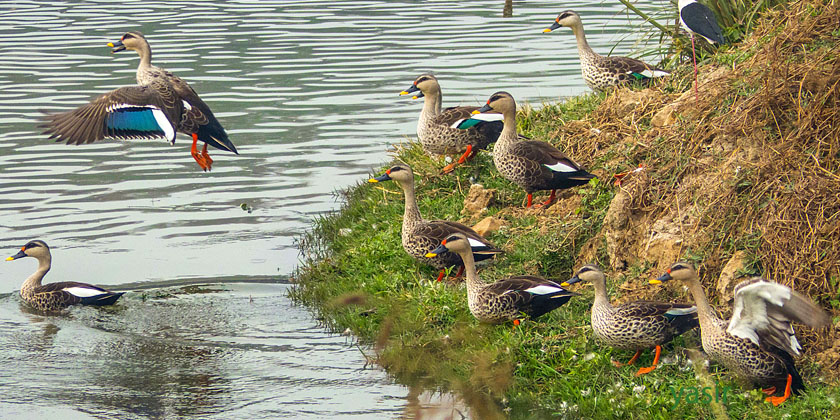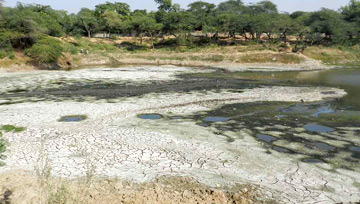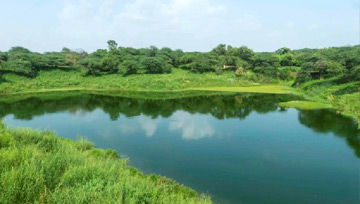Neela Hauz Biodiversity Park

Neela Hauz is a natural depression and was used to receive the entire drainage from the surrounding forests and used to supply drinking water to South Delhi at one time. It was filled up with solid wastes leaving small depression which used to receive untreated sewage from surrounding colonies. During the construction of Aruna Asaf Ali Bridge across Neela Hauz, it was further filled up and degraded and made into a waste dump.
To restore the Lake into its original state, the Lake was desilted and the desilted material was used for landscaping around the Lake. The raw sewage and raw sewage + treated sewage that used to enter Neela Hauz and then into Sanjay Van and finally to river Yamuna, now is purified by passing through constructed wetland system with zero energy.
The wastewater treatment in the filter bed of constructed wetlands is the result of complex interactions between Sediment, sand bed, Root zone, and water in pores, Litter, detritus (non-living particulate organic material, such as leaf litter), water, air, plants and plant roots, biomass zones, such as bacteria growing in sand and attached to roots. A mosaic of sites with different oxygen levels exists in constructed wetlands, which triggers diverse degradation and removal processes.
It took two years to make it functional with zero energy input. Today the constructed wetland converts one million liters of sewage water per day into clean water comparable to tap water having less than BOD 4mg/liter per day.
Neela Hauz Biodiversity Park was inaugurated on 11th November, 2016 by Hon'ble Lt. Governor, Delhi Shri Najeeb Jung. About 10,000 individuals of 90 native species belong to 10 communities were planted by 4000 students and locals.
The detailed water analysis of Neela Hauz Biodiversity Park is given below. The analysis shows the efficiency of treatment wetlands
|
 |
 |
|
Before restoration |
After restoration |
